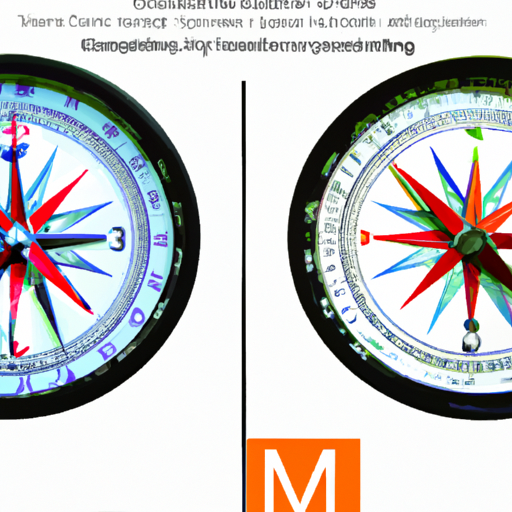What Are Emerging Trends In IT Services That I Should Be Aware Of?
In the fast-paced world of technology, it’s important to stay up-to-date with the emerging trends in IT services. From artificial intelligence and machine learning to cloud computing and cybersecurity, these trends are shaping the way businesses operate and transforming the IT industry as we know it. Whether you’re a tech enthusiast or a business owner, keeping an eye on these trends can help you stay competitive and make informed decisions. So, buckle up and get ready to explore the exciting world of emerging IT trends that you should be aware of!
Cloud Computing
Cloud computing has revolutionized the way businesses and individuals store, manage, and access data. One of the emerging trends in cloud computing is serverless computing. With serverless computing, you no longer need to worry about managing servers or infrastructure. Instead, you can focus on writing and deploying code, while the cloud provider takes care of the underlying infrastructure. This allows for greater scalability and flexibility, as resources are automatically allocated based on demand. Serverless computing has gained popularity due to its cost-effectiveness and ease of use.
Another trend in cloud computing is edge computing. Edge computing brings computing resources closer to the source of data generation, such as IoT devices, sensors, or mobile devices. By processing data locally at the edge, organizations can reduce latency, improve response times, and minimize bandwidth usage. Edge computing is particularly important in scenarios where real-time processing or low latency communication is required, such as autonomous vehicles or industrial IoT applications. This trend is expected to grow as the number of connected devices continues to increase.
hybrid cloud solutions are another emerging trend in cloud computing. A hybrid cloud is a combination of public and private cloud infrastructure, allowing organizations to take advantage of both environments. This provides the flexibility to store sensitive data on-premises, while leveraging the scalability and cost-effectiveness of public cloud resources. Hybrid cloud solutions allow businesses to optimize their workloads, maintain control over critical data, and seamlessly transition between cloud environments. As organizations seek to balance security, performance, and cost, hybrid cloud solutions are becoming increasingly popular.
Artificial Intelligence
Artificial Intelligence (AI) is transforming various industries by enabling machines to learn, reason, and make decisions in a way that mimics human intelligence. Machine learning, a subset of AI, is a trend that has gained significant momentum. Machine learning algorithms use historical data to learn patterns and make predictions or take actions without explicit instructions. This technology has a wide range of applications, from fraud detection and recommendation systems to autonomous vehicles and personalized medicine.
Natural Language Processing (NLP) is another important trend in AI. NLP focuses on enabling computers to understand, interpret, and generate human language. This technology is used in voice assistants (such as Siri or Alexa) and chatbots, allowing users to interact with machines using natural language. NLP has also been applied in sentiment analysis, language translation, and information extraction. As AI continues to improve, NLP will play a crucial role in enhancing human-computer interaction and enabling machines to understand human language more accurately.
Computer vision is an AI technology that focuses on training machines to interpret and understand images or visual data. This includes tasks such as object recognition, image classification, and image segmentation. Computer vision is widely used in autonomous vehicles, surveillance systems, medical imaging, and facial recognition systems. With advancements in deep learning algorithms and the availability of large datasets, computer vision has made significant progress in recent years. This trend is expected to continue as the demand for visual intelligence grows across industries.
Internet of Things (IoT)
The Internet of Things (IoT) refers to the network of interconnected physical devices that communicate and exchange data with each other. One of the emerging trends in IoT is the proliferation of connected devices. From smart home devices to wearables and industrial sensors, connected devices are becoming more prevalent in our daily lives. These devices collect and transmit data, enabling organizations to gain insights, automate processes, and make more informed decisions. The growth of connected devices is driving the need for robust IoT infrastructure, security, and analytics capabilities.
Smart homes are another key trend in IoT. Smart home devices, such as smart thermostats, lighting systems, and security cameras, are becoming increasingly popular. These devices can be controlled remotely through smartphones or voice assistants, offering convenience and energy efficiency. Smart homes provide homeowners with greater control, comfort, and security, while also enabling energy savings. In the future, smart home technology is expected to evolve further, integrating seamlessly with other IoT devices and offering more sophisticated automation capabilities.
Industrial IoT (IIoT) is the application of IoT technology in industrial settings, such as manufacturing facilities, logistics, or energy management systems. IIoT enables real-time monitoring, predictive maintenance, and process optimization, leading to increased productivity and cost savings. Industrial IoT devices, such as sensors, actuators, and connected machinery, work together to collect and analyze data, enabling proactive decision-making and improving operational efficiency. This trend is revolutionizing industries by unlocking new opportunities for optimization, automation, and digitization.
Blockchain Technology
Blockchain technology is a decentralized and distributed ledger system that enables secure and transparent transactions without the need for intermediaries. Decentralized systems are one of the emerging trends in blockchain technology. Unlike traditional centralized systems, decentralized systems distribute the storage and processing of data across multiple nodes, making them more resilient to attacks and ensuring greater transparency. Decentralized systems are being explored in various industries, including finance, supply chain management, and healthcare, as they offer enhanced security and trust.
Cryptocurrencies, such as Bitcoin and Ethereum, are another trend associated with blockchain technology. Cryptocurrencies are digital currencies that use cryptographic techniques to secure transactions and control the creation of new units. They operate on decentralized networks and provide users with greater control and privacy over their financial transactions. Cryptocurrencies have gained considerable attention and are being adopted by individuals and businesses as an alternative means of payment and investment.
Smart contracts are self-executing contracts that are stored and executed on the blockchain. These contracts automatically enforce the terms and conditions agreed upon by the parties involved, eliminating the need for intermediaries. Smart contracts have the potential to revolutionize various industries by automating processes, reducing costs, and increasing transparency. They can be used for a wide range of applications, including supply chain management, insurance claims processing, and real estate transactions. As blockchain technology matures, the adoption and utilization of smart contracts are expected to increase.
Cybersecurity
In an increasingly interconnected world, cybersecurity has become a critical concern for organizations and individuals alike. Network security is one of the key trends in cybersecurity. As cyber threats continue to evolve, organizations must implement robust network security measures to protect their infrastructure and data from unauthorized access, malware, and other malicious activities. Network security includes technologies such as firewalls, intrusion detection systems, and secure networking protocols. It also encompasses best practices for network architecture, access control, and incident response.
Data encryption is another important trend in cybersecurity. Encryption is the process of encoding data so that only authorized parties can access and understand it. Encryption protects data from unauthorized disclosure or tampering, even if it is intercepted during transmission or storage. As organizations collect and store vast amounts of sensitive data, encryption becomes crucial in ensuring its confidentiality and integrity. The adoption of encryption technologies, such as advanced encryption standards (AES) and secure socket layer (SSL), is essential for safeguarding data against cyber threats.
Threat intelligence is an emerging trend in cybersecurity that focuses on proactively identifying, monitoring, and mitigating potential threats. Threat intelligence involves gathering information about known threats, vulnerabilities, and actors, and using that information to anticipate and defend against future attacks. By analyzing data from various sources, including security logs, threat intelligence provides organizations with actionable insights to detect and prevent cyber attacks. It helps organizations stay informed about the latest security threats, vulnerabilities, and attack techniques, allowing them to take proactive measures to protect their systems and data.
Big Data Analytics
With the increasing volume, variety, and velocity of data being generated, big data analytics has become essential for organizations to gain valuable insights and make data-driven decisions. Predictive analytics is an emerging trend in big data analytics. Predictive analytics leverages historical data, statistical algorithms, and machine learning techniques to make predictions about future events or outcomes. By analyzing patterns and relationships within large datasets, organizations can forecast trends, optimize operations, and identify opportunities or potential risks.
Data visualization is another important trend in big data analytics. Data visualization involves presenting data in a visual format, such as charts, graphs, or maps, to facilitate understanding and interpretation. Effective data visualization helps organizations communicate complex information, identify patterns or anomalies, and derive actionable insights. With the advancements in data visualization tools and techniques, organizations can explore and interact with data in a more intuitive and meaningful way, enabling better decision-making and storytelling.
Real-time analytics is a trend that focuses on analyzing data as it is generated, providing insights and actionable information in real-time or near real-time. Real-time analytics enables organizations to respond quickly to changing conditions, detect anomalies, and make informed decisions in dynamic environments. This trend is particularly relevant in industries such as finance, e-commerce, and cybersecurity, where timely analysis and response are crucial. Real-time analytics relies on technologies such as in-memory processing, stream processing, and event-driven architectures to handle the high velocity and volume of data streams.
Robotic Process Automation (RPA)
Robotic Process Automation (RPA) is the use of software robots or bots to automate repetitive and rule-based tasks. Task automation is a key trend in RPA. Software robots can mimic human actions by interacting with applications and systems, performing tasks such as data entry, form processing, or report generation. Task automation eliminates manual errors, speeds up processes, and frees up human employees to focus on more strategic or creative activities. Organizations are increasingly adopting RPA to streamline operations, reduce costs, and improve efficiency.
Cognitive automation is another trend in RPA that goes beyond task automation. Cognitive automation refers to the use of advanced technologies, such as artificial intelligence and machine learning, to enable software robots to understand, learn, and make decisions. Cognitive automation enables bots to handle more complex tasks that involve human-like judgment, reasoning, and problem-solving. This trend empowers organizations to automate cognitive tasks, such as customer service interactions, data analysis, or content moderation, leading to increased productivity and customer satisfaction.
Unattended automation is a trend in RPA that focuses on automating tasks without human intervention. Unattended automation allows software robots to operate independently, 24/7, without the need for human supervision. This trend is particularly useful for batch processing, data integration, or back-office operations. Unattended automation reduces the need for manual intervention, improves processing speed, and ensures consistent and accurate execution of tasks. As organizations seek to optimize their operations and achieve higher levels of automation, unattended automation is becoming increasingly prevalent.
Virtual Reality (VR) and Augmented Reality (AR)
Virtual Reality (VR) and Augmented Reality (AR) are technologies that create immersive and interactive experiences by blending the physical and virtual worlds. Immersive experiences are one of the main trends in VR and AR. These experiences enable users to step into virtual environments and interact with digital objects or surroundings as if they were real. VR headsets, such as Oculus Rift or HTC Vive, provide users with a fully immersive experience, while AR technologies, such as Microsoft HoloLens or mobile apps like Pokémon Go, overlay digital content onto the real world. Immersive experiences have applications in gaming, education, training, and entertainment, opening up new possibilities for engagement and interaction.
Training simulations are another important trend in VR and AR. VR and AR technologies offer realistic and interactive training environments that can simulate real-life scenarios and provide hands-on learning experiences. From flight simulators for pilots to healthcare training for surgeons, VR and AR simulations allow individuals to practice skills, make mistakes, and learn from them in a controlled and safe environment. Training simulations enhance learning outcomes, reduce costs, and minimize risks associated with real-world training.
Product visualization is a trend in VR and AR that allows users to visualize and interact with virtual representations of physical products. This technology is particularly relevant in industries such as architecture, manufacturing, or retail, where customers can preview and customize products before making a purchase. VR and AR product visualization enable organizations to showcase their products in a more engaging and immersive way, enhance customer experiences, and reduce the need for physical prototypes or samples. As the technology advances, product visualization in VR and AR is expected to become more realistic and accessible.
5G Technology
5G technology is the next generation of wireless communication that promises faster speeds, lower latency, and greater capacity compared to previous generations. Faster mobile networks are the main trend associated with 5G technology. With speeds up to 100 times faster than 4G, 5G networks enable faster download and upload speeds, smoother streaming, and enhanced browsing experiences. This has implications for various industries, including media and entertainment, gaming, e-commerce, and telemedicine. Faster mobile networks also enable new use cases, such as autonomous vehicles, remote surgery, or virtual reality gaming.
Low latency communication is another key trend in 5G technology. Latency refers to the delay between data transmission and reception. 5G technology reduces latency to less than a millisecond, enabling near real-time communication and responsiveness. Low latency is crucial for applications that require instant feedback or control, such as autonomous vehicles, industrial automation, or remote monitoring. This trend unlocks new possibilities for connected devices, remote collaboration, and interactive experiences. Low latency communication also enhances the effectiveness of technologies such as edge computing, where real-time processing is critical.
IoT enablement is a trend that is closely linked to 5G technology. 5G networks provide the necessary infrastructure and capabilities to support the massive deployment of IoT devices and applications. With its increased capacity and improved coverage, 5G enables more devices to be connected simultaneously, facilitating the growth of the IoT ecosystem. From smart cities and industrial automation to healthcare and agriculture, 5G technology empowers organizations to leverage the full potential of IoT by connecting and integrating a multitude of devices and sensors. This trend drives innovation, efficiency, and connectivity across industries.
Quantum Computing
Quantum computing is an emerging field that leverages the principles of quantum mechanics to perform complex computations. Quantum cryptography is a trend associated with quantum computing. Quantum cryptography utilizes the properties of quantum physics to ensure secure communication and data encryption. Unlike traditional cryptographic methods, which rely on mathematical algorithms, quantum cryptography leverages quantum states, such as the superposition and entanglement of particles, to provide unconditional security. Quantum cryptography offers the potential for unbreakable encryption and secure communication channels, protecting sensitive information against future advances in computing power.
Quantum machine learning is another trend in quantum computing. Quantum machine learning combines the power of quantum computing with machine learning algorithms to solve complex optimization problems and improve prediction accuracy. By leveraging quantum principles, such as parallel processing and quantum entanglement, quantum machine learning algorithms can outperform classical machine learning algorithms in certain tasks. Quantum machine learning has implications for various industries, including drug discovery, financial modeling, and supply chain optimization. As quantum computing continues to evolve, quantum machine learning is expected to unlock new capabilities and possibilities.
Quantum simulation is a trend that focuses on using quantum computers to simulate and model complex physical systems that are difficult to study using classical computers. Quantum simulation allows scientists and researchers to understand and predict the behavior of quantum systems, such as chemical reactions, material properties, or biological processes, with unprecedented accuracy. Quantum simulation has the potential to accelerate scientific discovery, drive advancements in drug development and materials science, and optimize complex processes. As quantum computing continues to advance, quantum simulation is expected to revolutionize various scientific and engineering fields.








